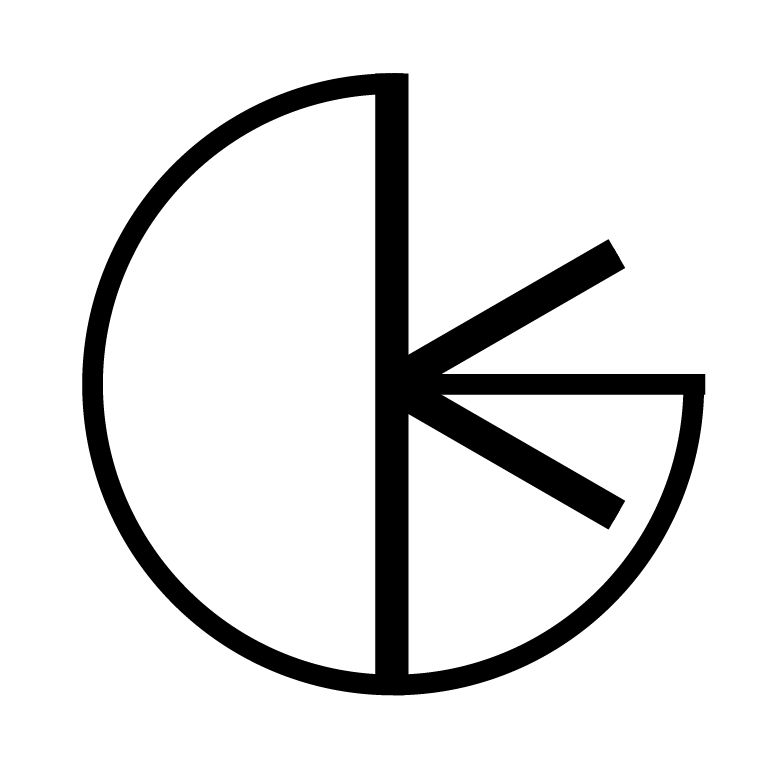Fantastic Devland - a multi service station in Armadale, Devland.
Client: Thesis Project: Master of Architecture (Professional)
Status: complete
Budget: -
Services Offered: -


collages describing the wide variety of infrastructure (’orgware’) that has gradually filled the wetland.
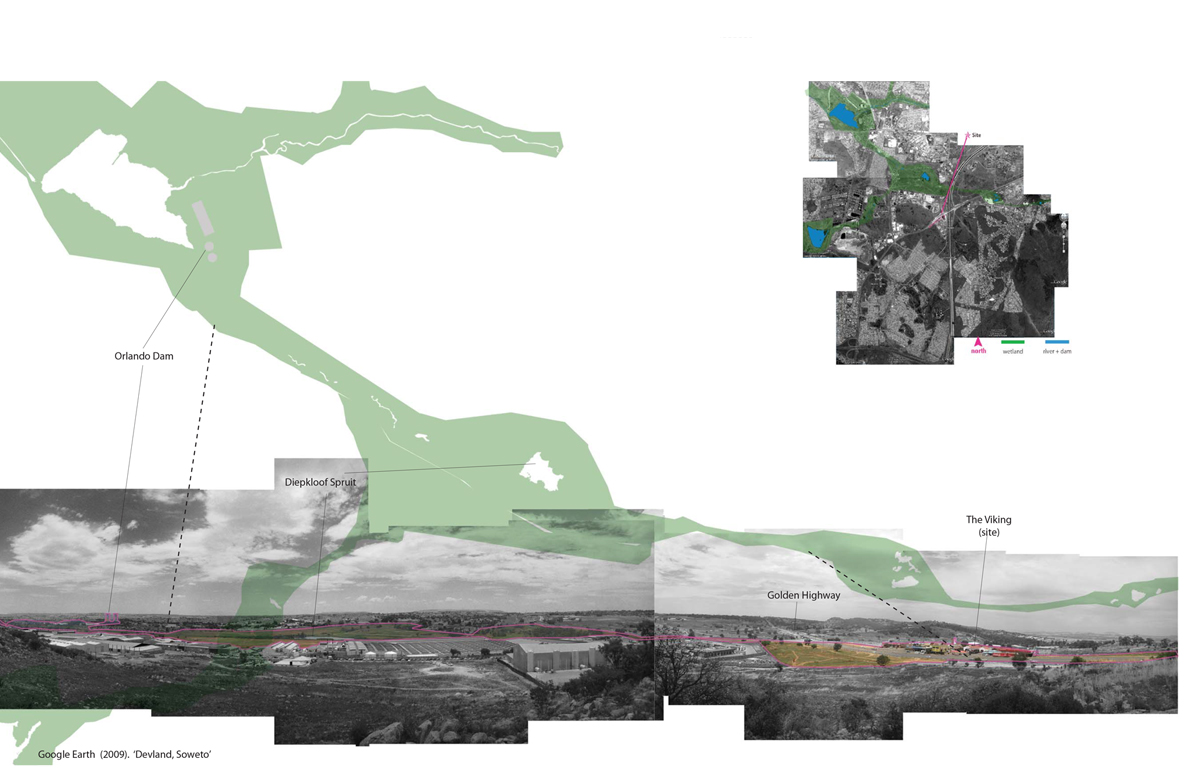
the pollutants have been allowed to contaminate the wetland, transforming it into a buffer zone.
This thesis began
with a simple question: what might the five previously iconic but today nearly
derelict petrol stations all on the same site called the Viking become today?
Then, the Viking was strategically located in the Baragwanath Buffer Zone. The
buffer separated the white suburbs of Johannesburg from its black suburbs.
Today, due to four outside forces, the Viking has fallen into near dereliction:
1. the collapse of Apartheid, so the buffer zone has been ‘decomissioned’ and thus placing the Viking within the sprawling city;
2. the construction of better motorways (N1);
3. Improvements in motor vehicles’ fuel economy has meant that motorists can travel further without needing to refuel as often; and
4. the standardisation of fuel quality, which has mitigated fuel and petrol station brand loyalty among motorists.
![]()
I began my process by reviewing the existing. I made two observations that I felt had design implications since both were to do with potential user groups. The major users of the Viking were long distance truckers hauling goods from harbours in the Cape to as far as Kenya. The second was that the buffer zone has been inhabited by approximately 50,000 squatters. It became clear that the Viking could become a facility that supports both the exhausted truckers and these vulnerable citizens.
The facility became a truck stop managed by the municipality and manned by local entrepreneurs who were meant to have been trained and mentored in-house.
![]()
Today, due to four outside forces, the Viking has fallen into near dereliction:
1. the collapse of Apartheid, so the buffer zone has been ‘decomissioned’ and thus placing the Viking within the sprawling city;
2. the construction of better motorways (N1);
3. Improvements in motor vehicles’ fuel economy has meant that motorists can travel further without needing to refuel as often; and
4. the standardisation of fuel quality, which has mitigated fuel and petrol station brand loyalty among motorists.

I began my process by reviewing the existing. I made two observations that I felt had design implications since both were to do with potential user groups. The major users of the Viking were long distance truckers hauling goods from harbours in the Cape to as far as Kenya. The second was that the buffer zone has been inhabited by approximately 50,000 squatters. It became clear that the Viking could become a facility that supports both the exhausted truckers and these vulnerable citizens.
The facility became a truck stop managed by the municipality and manned by local entrepreneurs who were meant to have been trained and mentored in-house.
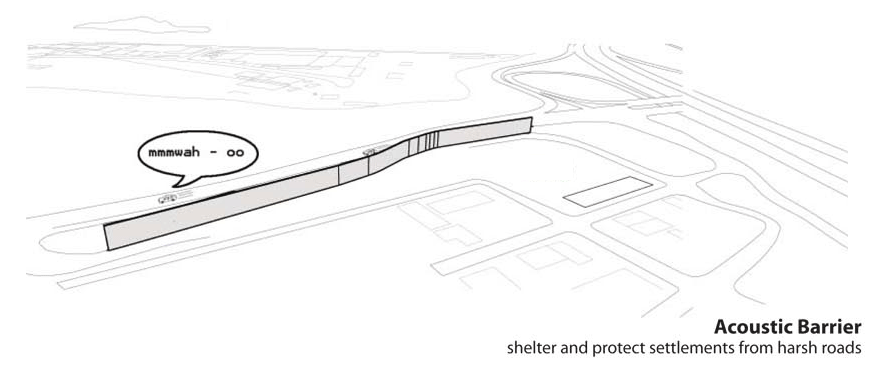
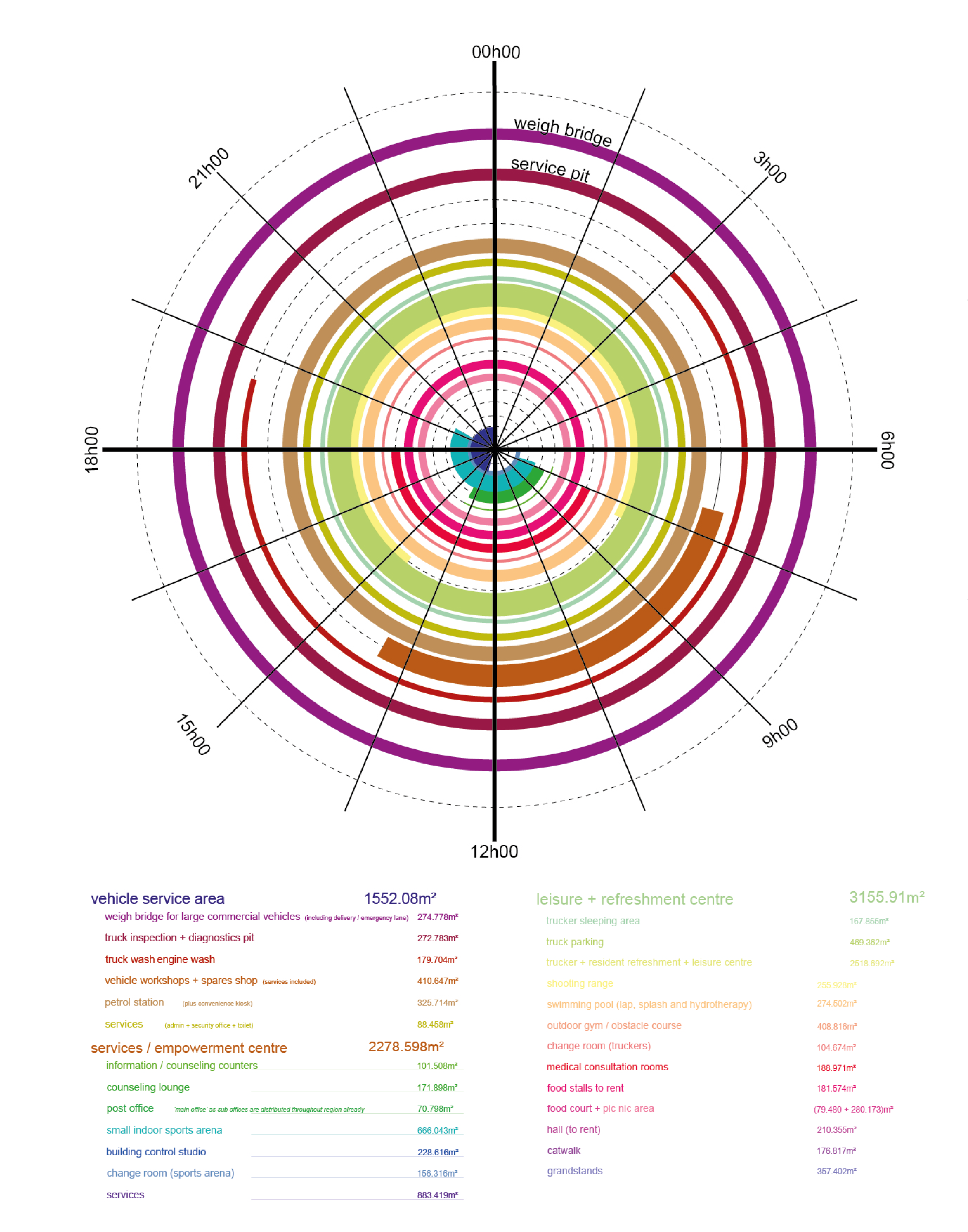
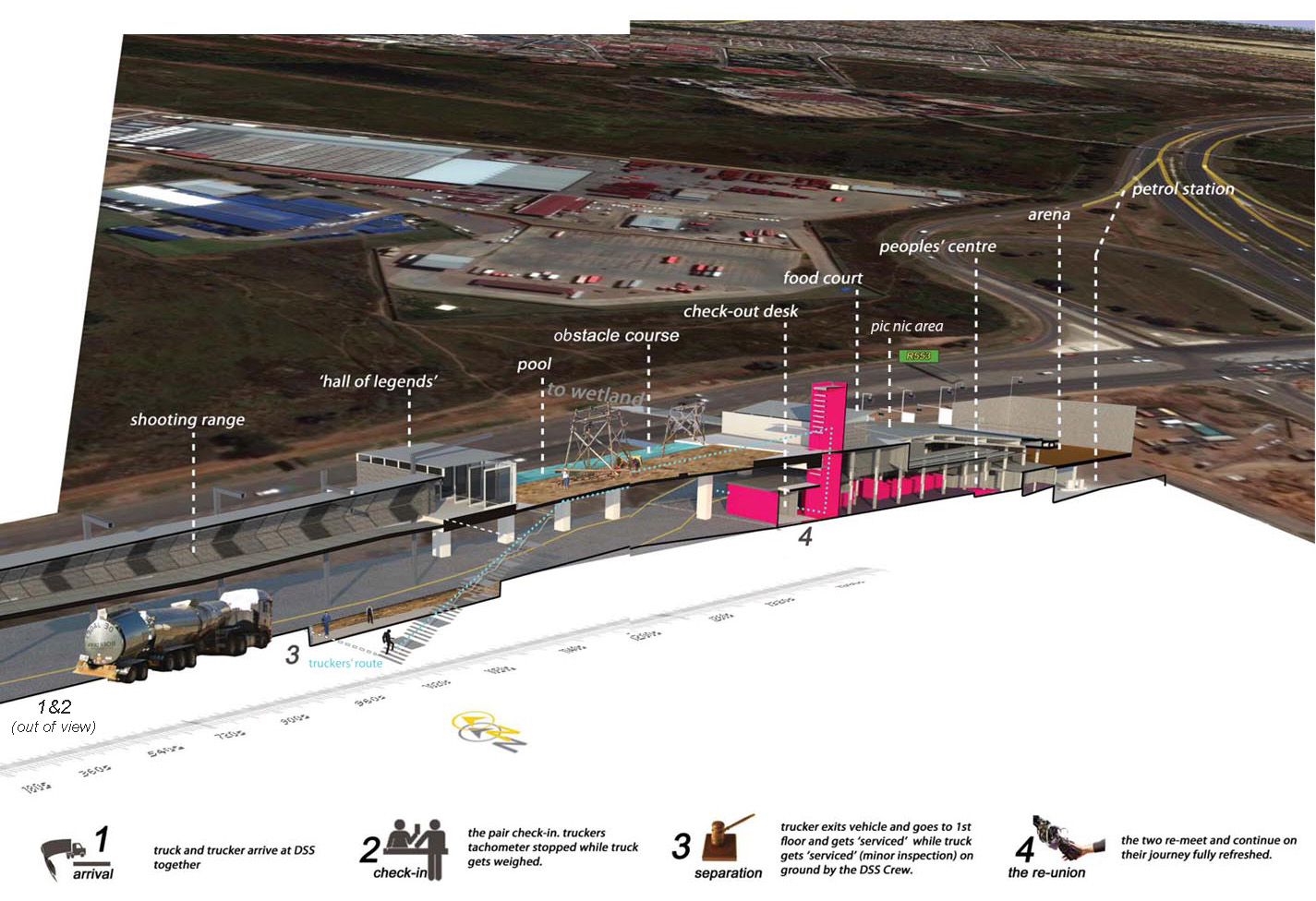 When the truck and trucker arrive at the Viking
the trucker would exit his truck and ascend to first floor. The vehicle would
remain on ground on a conveyer belt where it would be serviced by locals. It
would be weighed, washed, receive a minor check-up and the tachometer would be
reset. The driver would be serviced too: he could fire weapons in the shooting
range, complete an obstacle course, visit a doctor, stretch or swim laps in the
pool, spend a few hours in a hotel room, enjoy local specialities in the food
court, watch sports or participate in a sporting activity or shower. The
replenishment would take 45 minutes.
When the truck and trucker arrive at the Viking
the trucker would exit his truck and ascend to first floor. The vehicle would
remain on ground on a conveyer belt where it would be serviced by locals. It
would be weighed, washed, receive a minor check-up and the tachometer would be
reset. The driver would be serviced too: he could fire weapons in the shooting
range, complete an obstacle course, visit a doctor, stretch or swim laps in the
pool, spend a few hours in a hotel room, enjoy local specialities in the food
court, watch sports or participate in a sporting activity or shower. The
replenishment would take 45 minutes.
 section through the medical consultation rooms, obstacle course and pool on roof and vehicle workshops beneath.
section through the medical consultation rooms, obstacle course and pool on roof and vehicle workshops beneath. section through the foodcourt on roof and municipal offices (peoples’ centre) beneath.
section through the foodcourt on roof and municipal offices (peoples’ centre) beneath.
 section through grandstand on roof and municipal offices’ (peoples’ centre) consultation cubicles beneath.
section through grandstand on roof and municipal offices’ (peoples’ centre) consultation cubicles beneath.
model of the Devland Multi-service centre.
 information leaflet describing how the Devland Multi-service centre would be built. It is intended to be a collaboration between skilled and unskilled local labour.
information leaflet describing how the Devland Multi-service centre would be built. It is intended to be a collaboration between skilled and unskilled local labour.

